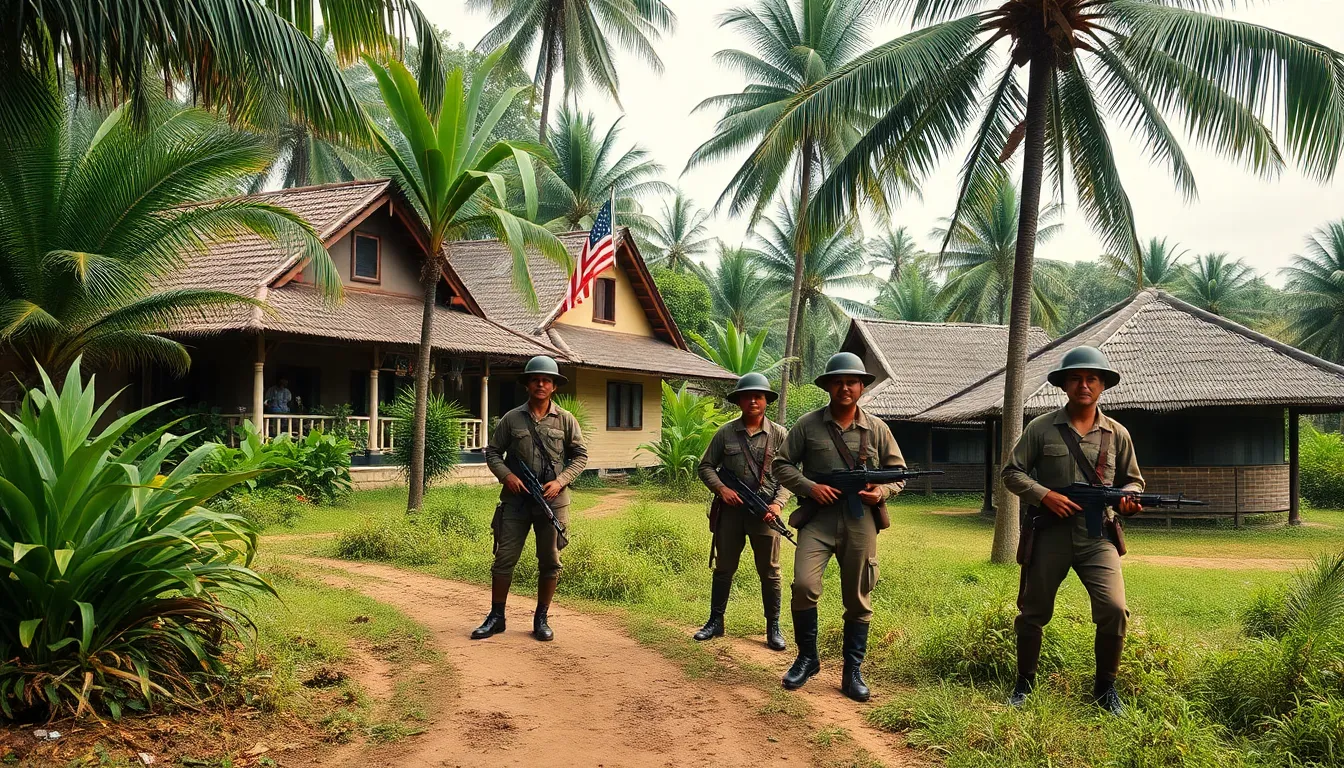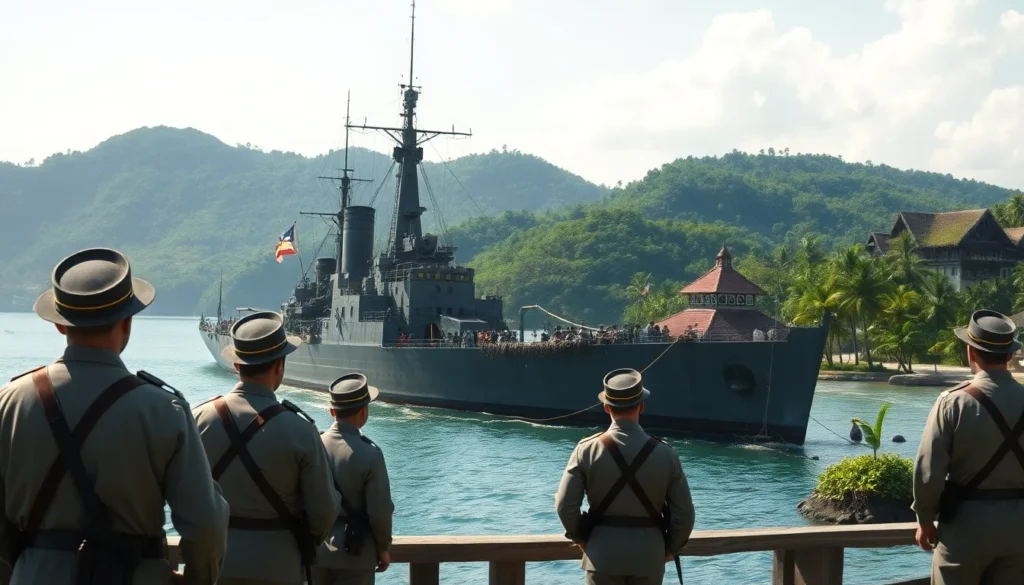Table of Contents
ToggleThroughout history, the United States has wielded its power beyond its borders, often through imperialistic ventures. This expansionist approach shaped not only the nation’s identity but also the global landscape. From the late 19th century to the early 20th century, the U.S. engaged in significant territorial acquisitions and interventions that reflected its growing influence.
Examining four key locations reveals the complexities of American imperialism. Each case highlights a blend of economic interests, strategic positioning, and cultural motivations. Understanding these instances offers insight into how imperialism has impacted both the U.S. and the nations involved, shedding light on the lasting effects that resonate today.
Overview of US Imperialism
US imperialism primarily occurred between the late 19th and early 20th centuries, characterized by territorial acquisitions and military interventions. Economic motives frequently drove this expansion, aiming to secure new markets and access to raw materials. Strategic considerations also influenced actions, enabling the U.S. to enhance its global military presence.
Cultural factors played a role, as proponents often justified imperialism by promoting the idea of spreading democracy and civilization. This mindset, sometimes referred to as the “White Man’s Burden,” underscored beliefs of American superiority and responsibility to uplift other nations.
The consequences of imperialism rippled across the globe, affecting the U.S.’s relationship with various countries. Each territorial gain and intervention not only altered the lives of affected populations but also reshaped America’s foreign policy and national identity. Understanding these historical contexts is essential for analyzing contemporary U.S. relations and global positioning.
Place One: The Philippines


The Philippines serves as a significant example of American imperialism in action. The U.S. acquired the archipelago following the Spanish-American War in 1898, marking a pivotal moment in its expansionist agenda.
Background and Context
The Treaty of Paris, signed in December 1898, ceded the Philippines from Spain to the United States for $20 million. This acquisition was not merely territorial but also fueled by economic aspirations. The U.S. sought new markets and greater access to resources, viewing the Philippines as a strategic gateway to Asia. The ensuing Philippine-American War from 1899 to 1902 further complicated relations, as many Filipinos resisted American authority, seeking independence rather than colonization.
Impact on Local Population
The imperialistic control exerted by the U.S. significantly transformed the lives of Filipinos. American governance introduced changes in education, infrastructure, and public health, which aimed to modernize the archipelago. However, this influence often came with negative consequences. Resistance movements surfaced, resulting in high civilian casualties and long-lasting social divisions. The immediate aftermath saw a shift in cultural identity, with many Filipinos experiencing a blend of both American and indigenous influences as they navigated their new reality. The ramifications of American rule continue to shape contemporary Philippine society and its relationship with the U.S.
Place Two: Hawaii
Hawaii serves as a critical example of U.S. imperialism, marked by its strategic location and economic potential. The annexation of Hawaii reflects the broader themes of American expansionism in the Pacific.
Annexation Process
In 1898, the U.S. annexed Hawaii through the Newlands Resolution, which enabled American control over the islands. Economic interests played a significant role, particularly in the sugar industry, where American planters sought to secure favorable tariffs. Prior to annexation, a coup in 1893, supported by U.S. business interests and military presence, overthrew Queen Liliʻuokalani, leading to the establishment of a provisional government. The annexation was widely debated, with proponents arguing it would strengthen U.S. military and economic power in the Pacific.
Cultural and Economic Effects
The annexation of Hawaii resulted in profound cultural and economic changes. Economic reforms favored American businesses, leading to the dominance of agriculture and tourism industries. The imposition of English as the primary language altered educational systems and diminished native Hawaiian culture. Indigenous populations faced significant challenges, including loss of land and identity. The integration into the U.S. also set the stage for ongoing debates over statehood and sovereignty, influencing contemporary discussions on Hawaiian rights and identity.
Place Three: Puerto Rico
Puerto Rico presents a significant case of American imperialism, providing insight into political, social, and economic dynamics following its acquisition in 1898.
Political Status and Governance
After the Spanish-American War, the U.S. acquired Puerto Rico through the Treaty of Paris. The Foraker Act of 1900 established a civil government but restricted Puerto Rican self-governance. While Puerto Ricans were granted U.S. citizenship in 1917, they lacked full voting rights, creating a distinct political status as an unincorporated territory. The local government consists of a Governor and a Legislative Assembly; however, decisions regarding federal law and budget approval remain under U.S. congressional control. This limited autonomy sparked ongoing debates about statehood, independence, and the island’s political future.
Consequences of Imperialism
American imperialism had profound impacts on Puerto Rico’s economy, culture, and identity. The U.S. imposed a tax system that favored American businesses, disrupting local economies and agricultural practices. Economic dependency on the U.S. grew, leading to increased unemployment and migration. American culture permeated various aspects of life, promoting English as the primary language while diminishing the prominence of Spanish and indigenous influences. These changes fostered complex identity issues for Puerto Ricans, as they navigate their unique heritage amid Americanization. The socioeconomic disparities created by imperialism contribute to continued discussions about governance and cultural preservation in modern Puerto Rico.
Place Four: The Panama Canal
The construction of the Panama Canal represents a critical example of American imperialism, showcasing strategic ambitions in Central America. This engineering marvel not only transformed global trade routes but also solidified U.S. influence in the region.
Strategic Importance
Strategic interests governed the U.S.’s involvement in Panama and the eventual construction of the canal. America sought to establish a shortcut between the Atlantic and Pacific Oceans, shortening travel distances for military and commercial vessels. In 1904, the U.S. signed the Hay-Varilla Treaty, granting control over the canal zone. This control facilitated increased military presence and economic dominance, positioning the U.S. as a key actor in international maritime commerce. The canal opened in 1914, dramatically enhancing the efficiency of shipping routes, enabling faster deployments of naval forces, and solidifying the U.S.’s role in global trade.
Effects on Regional Relations
The U.S. role in Panamanian affairs reshaped regional dynamics and relations. U.S. interference in Panama’s independence from Colombia in 1903 sparked tensions, fostering resentment among Latin American nations. The perception of American imperialism fostered anti-American sentiment, often referred to as the “Big Stick” diplomacy, emphasizing military readiness to achieve foreign policy goals. American control over the canal also spurred nationalistic movements within Panama, with calls for sovereignty and control over their territory. These historical tensions continue to influence modern U.S.-Latin American relationships, with lingering perceptions of imperialism and exploitation affecting diplomatic interactions today.







